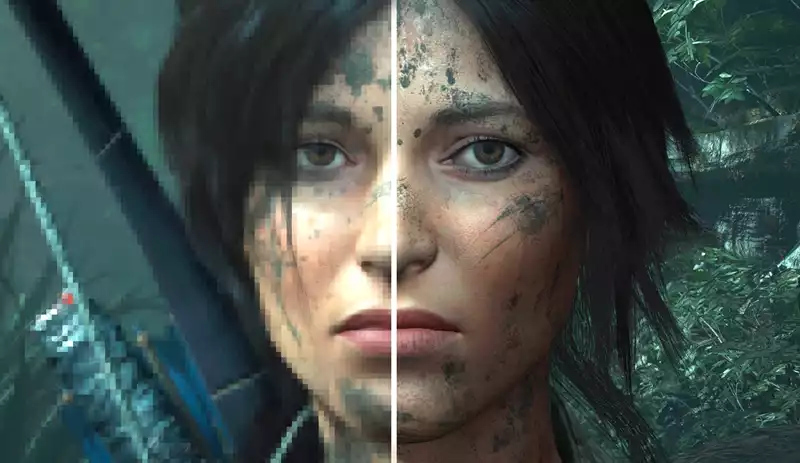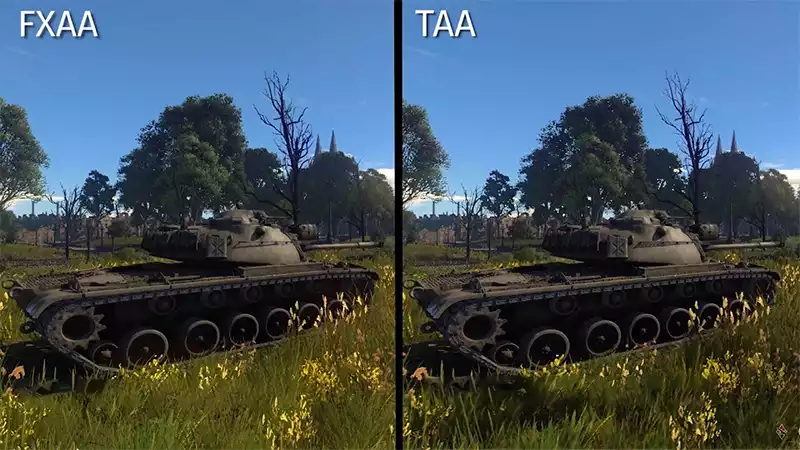You can also be interested in these:
- The history of RPG and why it is beloved by many
- The most costly Dota 2 types of equipment for tournaments
- The most successful academic lineups in CS:GO eSports
- OSRS: Get ready for the Tombs of Amascut
Many graphic enhancement techniques are available to video game developers. Two of the most popular are TAA and FXAA. But what is the real difference between these two methods? This article will discuss the benefits of each technique and help you decide which one is right for you.

What is TAA and FXAA?
TAA is an anti-aliasing technique that uses super-sampling to reduce aliasing artifacts. FXAA is an anti-aliasing technique that applies a filter to the image to minimize aliasing artifacts.
How do they work, and which one is better?
TAA and FXAA are two methods of anti-aliasing or the process of smoothing out jagged edges in images. They both work by detecting edges in an image and filling in the gaps between those edges with pixels of similar colors.
TAA is generally considered a more effective method than FXAA, as it produces less blurriness and artifacts. However, it is also more resource-intensive, so it may not suit all applications. FXAA is a newer method designed to be more efficient than TAA. It does not produce high-quality results, but it may be a better option for applications that need to conserve resources.
What are the benefits of each?
TAA, or Temporal Anti-Aliasing, is an excellent option if you’re looking for a high-quality anti-aliasing solution. It effectively reduces aliasing without sacrificing image quality or performance.
FXAA, or Fast Approximate Anti-Aliasing, is an excellent option if you’re looking for a fast and efficient anti-aliasing solution. It doesn’t give the same level of quality as TAA, but it’s much quicker and more efficient.
TAA is an advanced anti-aliasing technique that minimizes aliasing (jagged and flickering edges) by sampling the scene over time and combining the samples. This results in a smoother image overall. FXAA, or Fast Approximate Anti-Aliasing, is a newer AA method that achieves similar quality to TAA but with less of a performance hit. It does this by using a more simplified algorithm that can be run on lower-end hardware. So, if you’re looking for better image quality with less performance impact, TAA is the way to go. However, if you’re looking for the best possible performance, regardless of image quality, then FXAA is your best bet. Whichever method you choose, you’re sure to see an improvement in your gaming experience.
What are the drawbacks of each?
TAA does a better job smoothing out edges but can sometimes result in a blurring effect. On the other hand, FXAA is less effective at smoothing out edges but doesn’t usually cause as much blurring.
Which should you choose for your game?
The answer may depend on the game you are playing. For example, if you are playing a fast-paced game with a lot of movement, then TAA may be the better option. On the other hand, if you are playing a slower-paced match where there isn’t as much movement, then FXAA may be the better choice. Ultimately, it is up to you to decide which one works best for your particular game and situation. Whichever one you choose, know that TAA and FXAA can help reduce aliasing in your games.

There are a few critical differences between TAA and FXAA that you should consider before making your decision. But first, let’s see at how each of these types of anti-aliasing works.
TAA is a temporal anti-aliasing technique that looks at the previous frame to help smooth out jagged edges. This means that it requires more processing power than other methods, but it can produce better results overall. However, one downside to TAA is that it can sometimes introduce motion blur into your image.
FXAA is a fast approximate anti-aliasing method that doesn’t require much processing power as TAA. As a result, it can be a good choice for games or projects where performance is a concern. However, one downside to FXAA is that it can sometimes result in a “softer” image overall.
What is the future for these two technologies?
TAA is a more sophisticated technique that offers better image grade than FXAA. However, it means increased computational complexity. As a result, TAA is not as widely used as FXAA.
TAA will likely continue to be used in high-end games and applications where image quality is paramount. FXAA will remain popular due to its simplicity and lower computational requirements. Ultimately, the choice of which anti-aliasing technique to use will depend on the specific needs of the application or game.
Are there any other anti-aliasing methods you should use instead of TAA or FXAA?
A few other anti-aliasing methods worth mentioning, such as MSAA (Multisample Anti-Aliasing) and SSAA (Super Sample Anti-Aliasing). MSAA is a bit more resource-intensive than TAA or FXAA, but it does provide better image quality. On the other hand, SSAA is even more resource intensive than MSAA, and while it offers the best image quality, it can also introduce a significant input lag. So, if you’re looking for the best possible image quality and don’t mind sacrificing some performance, then SSAA is the way to go. However, if you’re looking for a balance between performance and image quality, TAA or FXAA should be your go-to choose.
Conclusion
So, TAA or FXAA? Well, that depends on what you’re needing. If you want the best image quality and don’t mind a performance hit, go with TAA. On the other hand, if you want the smoothest possible image without sacrificing too much performance, go with FXAA. And if you can’t decide, try both and see which one works better for your game. The future of these two technologies has its advantages and disadvantages, but hopefully, we’ll start to see more games using them shortly. In the meantime, experiment with them yourself.
More stories like this
- The history of RPG and why it is beloved by many
- The most costly Dota 2 types of equipment for tournaments
- The most successful academic lineups in CS:GO eSports
- OSRS: Get ready for the Tombs of Amascut
- eSports careers for those who can’t play
- 5 Underrated pro tips in Valorant